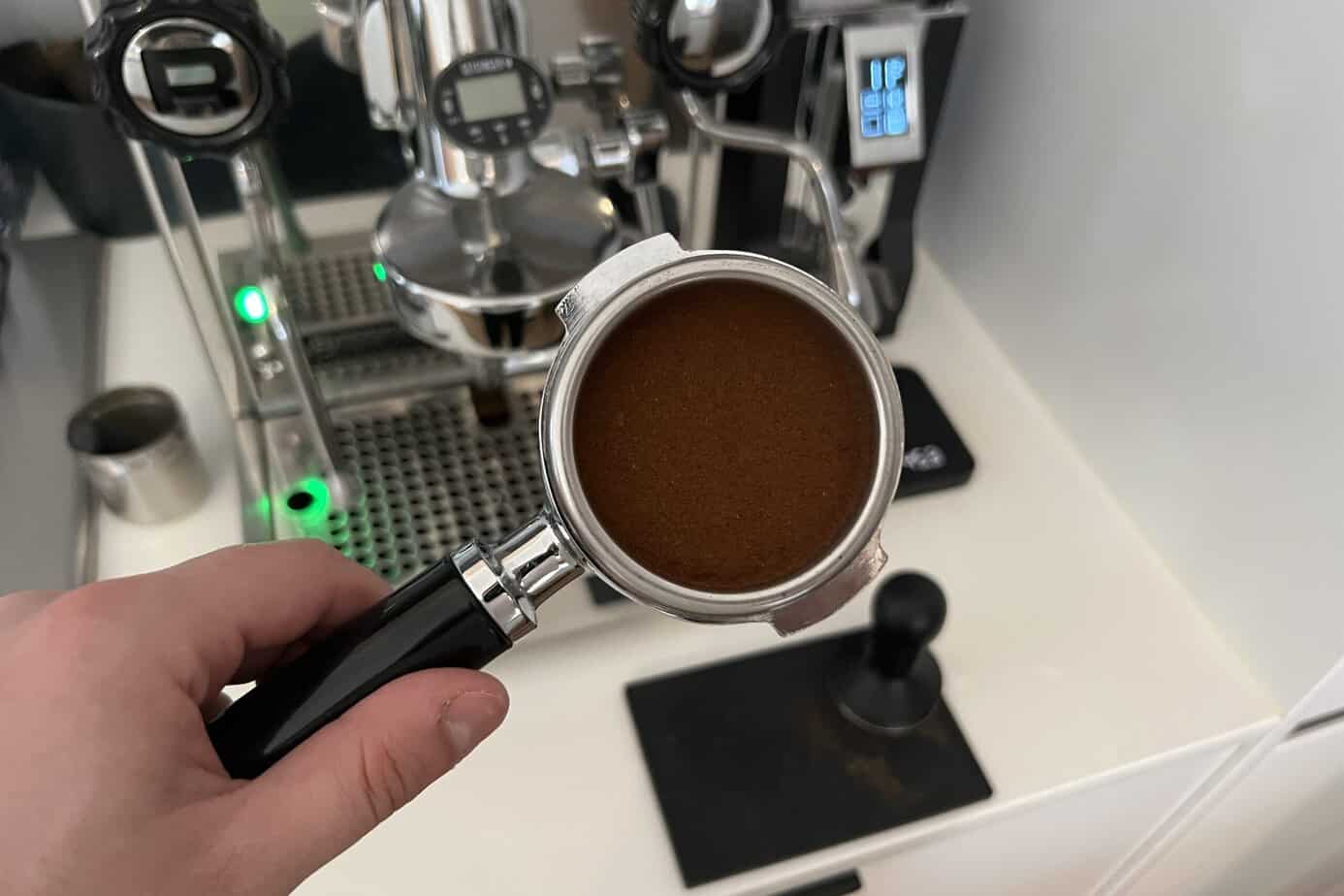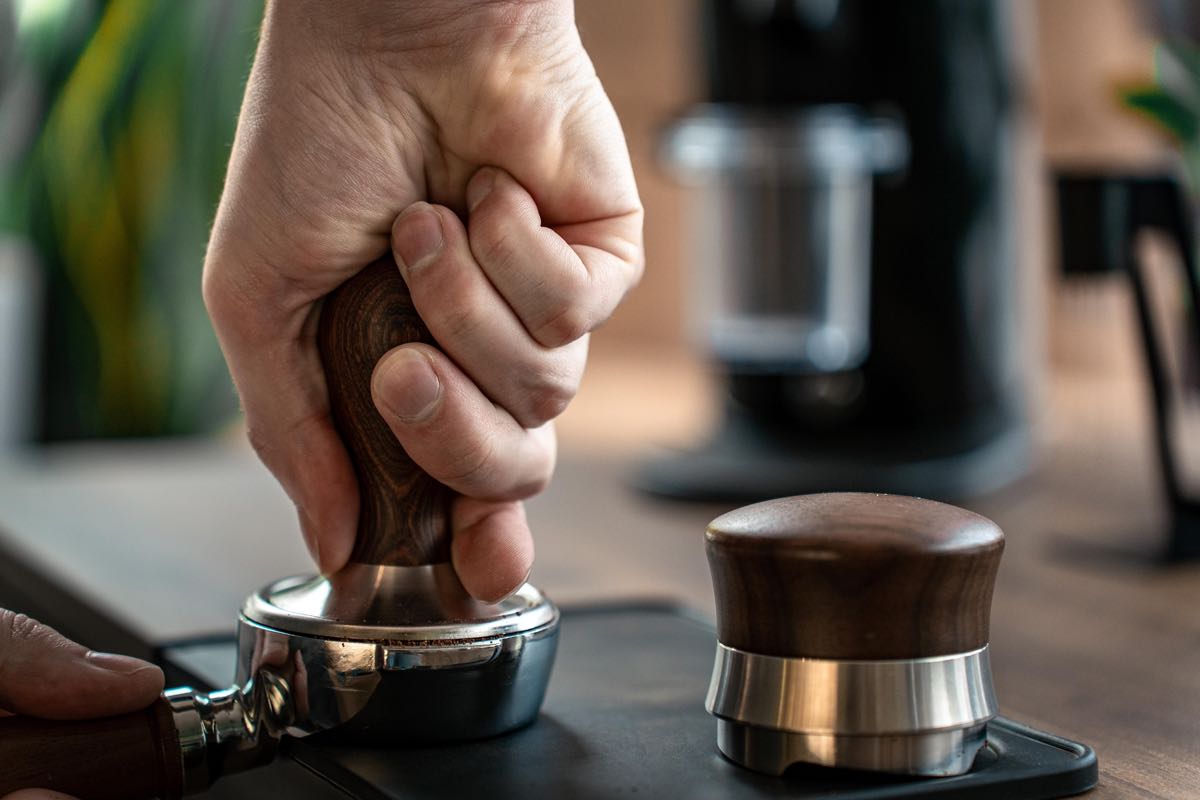Crafting a perfect espresso at home is both an art and a science. Over the years, I’ve learned that while there are many variables involved—grind size, water temperature, extraction time—tamping is one aspect that often gets overlooked. Yet, it’s one of the most critical factors in achieving a consistently delicious shot. Let me share my personal insights and some essential tips on how hard you should tamp when making espresso at home.

Understanding the Role of Tamping in Espresso
When I first started making espresso, I didn’t pay much attention to tamping. I assumed it was just about pressing the coffee grounds flat so they didn’t spill over. However, I quickly learned that tamping plays a much more important role. It creates an even, compact bed of coffee that resists the pressure of the water flowing through it. This resistance allows for the proper extraction of flavors.
If the tamp is too light, water will find the path of least resistance, leading to uneven extraction and a weak, watery espresso. On the other hand, an overly aggressive tamp can make it hard for water to pass through, potentially over-extracting the coffee and creating bitter flavors.
If you're using a fully automatic espresso machine like the DeLonghi Magnifica Evo Espresso Machine with Frother Review, tamping becomes less of a concern, as these machines automate the process. However, for semi-automatic machines, mastering tamping is key.
How Hard Should You Tamp When Making Espresso at Home?
This was the million-dollar question for me. I read countless articles, watched endless videos, and even asked baristas at my favorite coffee shops. Here’s the golden rule I’ve discovered: aim for about 30 pounds of pressure when tamping.
Now, I know what you’re thinking—how on earth do you measure that? When I started, I didn’t have a scale that could measure force, but with practice, you develop a feel for it. To get a sense of what 30 pounds of pressure feels like, try pressing down on your bathroom scale with your hand. Once you have an idea, replicate that pressure with your tamper.
If you're new to espresso-making and want a machine that simplifies the process while still delivering rich, barista-quality shots, you might find the DeLonghi Dinamica Automatic Coffee & Espresso Machine Review helpful.
The Importance of Consistency in Tamping Pressure
One of the first things I learned was that consistency is key. When making espresso at home, your goal should always be to maintain uniform tamping pressure. If your tamp is inconsistent from one shot to the next, you’ll notice it in the flavor and quality of your espresso.
In my experience, a consistent tamp helps ensure that water flows evenly through the coffee grounds, leading to a balanced extraction. Whether you’re pulling a single shot or making multiple espressos for friends, make it a habit to tamp with the same force each time.
Finding the Right Tamper for Your Espresso Setup
Before we dive further into techniques, let’s talk about the tool itself: the tamper. When I first started out, I used the basic plastic tamper that came with my espresso machine. It got the job done, but as I became more serious about my espresso-making journey, I upgraded to a heavier, stainless steel tamper.
Why does this matter? A well-designed tamper makes it easier to apply even pressure. Some tampers even come with calibrated springs that click when you’ve reached the ideal pressure. If you’re new to tamping, I highly recommend investing in one of these—it takes a lot of guesswork out of the process.
For those considering an espresso machine that handles tamping for you, DeLonghi Magnifica Evo Review covers an automatic model that ensures even extraction every time.
How to Tamp Espresso Grounds Like a Pro
Tamping isn’t complicated, but it does require attention to detail. Here’s my step-by-step process for how hard you should tamp when making espresso at home:
Distribute the Grounds Evenly: After dosing the coffee into the portafilter, I always level it off with my finger or a coffee distributor tool. This ensures an even surface before tamping.
Hold the Tamper Like a Pen: I hold my tamper with a firm but relaxed grip, keeping my wrist straight. This helps me apply even pressure without straining my hand.
Press Straight Down: The goal is to apply force directly downward without tilting the tamper. I’ve found that even a slight angle can lead to channeling, where water bypasses parts of the coffee bed.
Apply About 30 Pounds of Pressure: This is where practice comes in. I press down firmly but not aggressively, stopping when I feel the resistance of the coffee bed pushing back.
Polish the Surface: Some baristas recommend twisting the tamper slightly at the end to smooth out the surface. I do this occasionally, but it’s not strictly necessary.
If you’d rather skip the manual tamping process, an all-in-one machine like the DeLonghi Eletta Explore Espresso Machine with Cold Brew Review can automate it for you.
Common Tamping Mistakes and How to Avoid Them
When I was new to making espresso, I made plenty of mistakes. Here are some common pitfalls and how I learned to overcome them:
Tamping Too Lightly: My early shots often tasted sour and under-extracted because I didn’t tamp hard enough. I learned to apply more pressure, aiming for that 30-pound benchmark.
Tamping Unevenly: Tilting the tamper was a big issue for me at first. To fix this, I started paying more attention to my wrist position and using a tamper with a flat base.
Over-Tamping: On the flip side, there were times when I tamped too hard, resulting in over-extracted, bitter espresso. The key is finding that sweet spot—firm but not excessive.
If you’re struggling with tamping consistency, machines like those reviewed in DeLonghi Magnifica S Review can help take the guesswork out of the process.
Does Tamping Pressure Vary by Coffee Type?
One question I’ve often asked myself is whether tamping pressure should change based on the type of coffee you’re using. In my experience, the answer is yes—but only slightly. For darker roasts, which tend to be more soluble, I use slightly lighter pressure. For lighter roasts, which are denser, I might tamp a bit harder. However, I always stay close to that 30-pound guideline.
Tools to Help You Perfect Your Tamping Technique
If you’re serious about making great espresso at home, there are a few tools that can help:
Calibrated Tampers: As I mentioned earlier, these are fantastic for beginners. They take the guesswork out of applying the right amount of pressure.
Leveling Tools: Before tamping, I sometimes use a leveling tool to ensure the grounds are evenly distributed. This makes tamping much easier.
Pressure Gauges: Some espresso machines come with pressure gauges that can help you fine-tune your technique.
Why Tamping Is Only One Piece of the Puzzle
While tamping is crucial, it’s not the only factor in making great espresso. Over the years, I’ve learned that grind size, dose, and water temperature all play equally important roles. For example, even with perfect tamping, an overly coarse grind will lead to under-extracted espresso, while a grind that’s too fine might cause over-extraction.
That said, tamping is one of the easiest variables to control once you’ve mastered the technique. By practicing and paying attention to how hard you tamp when making espresso at home, you’ll be well on your way to pulling consistently excellent shots.

My Final Thoughts on Tamping Pressure
Learning how hard to tamp when making espresso at home has been a game-changer for me. It’s not just about applying pressure—it’s about developing a consistent routine and paying attention to the details. If you’re just starting out, don’t be discouraged. With a little practice, you’ll soon develop a feel for the perfect tamp.
Remember, making espresso is as much about enjoying the process as it is about the result. So take your time, experiment with different techniques, and most importantly, savor every sip of your homemade espresso.
If you’re looking for an espresso machine that balances automation with user control, be sure to check out the DeLonghi Magnifica Evo Review for a model that offers both convenience and quality.
FAQ Section
Q: How hard should I tamp when making espresso at home?
A: Aim for about 30 pounds of pressure when tamping. This level of force helps create an evenly compacted coffee bed for proper extraction. Practice using a bathroom scale to get a feel for this amount of pressure.
Q: Can I use the plastic tamper that came with my espresso machine?
A: While the plastic tamper can work, upgrading to a heavier, stainless steel tamper will make it easier to apply consistent and even pressure. A calibrated tamper can also help ensure accuracy.
Q: What happens if I tamp too lightly?
A: Tamping too lightly can result in uneven extraction, leading to a weak and sour-tasting espresso. Water will flow too quickly through the coffee bed, bypassing certain areas.
Q: What happens if I tamp too hard?
A: Over-tamping can make it difficult for water to flow through the coffee, leading to over-extraction. This often results in bitter and unpleasant flavors in your espresso.
Q: Do I need to twist the tamper at the end?
A: Twisting the tamper to polish the surface is optional. It can help smooth out the coffee bed, but it’s not strictly necessary for a good espresso shot.
Q: Should tamping pressure vary based on the type of coffee?
A: Slight adjustments can be made. For darker roasts, use slightly lighter pressure, while for denser, lighter roasts, apply a bit more pressure. However, always stay close to the 30-pound guideline.
Q: What tools can help me improve my tamping technique?
A: Useful tools include calibrated tampers (which click at the correct pressure), coffee leveling tools for even distribution, and pressure gauges on espresso machines to monitor flow.
Q: Why is consistency in tamping pressure so important?
A: Consistency ensures that water flows evenly through the coffee bed, resulting in a balanced extraction. Variations in pressure can lead to uneven flavors in your espresso.
Q: How can I avoid tamping unevenly?
A: Keep your wrist straight, hold the tamper firmly, and apply pressure directly downward. A tamper with a flat base can also help you achieve even tamping.
Q: Is tamping the only factor in making great espresso?
A: No, tamping is just one variable. Grind size, coffee dose, and water temperature also play crucial roles. However, mastering your tamping technique can significantly improve your espresso consistency.
